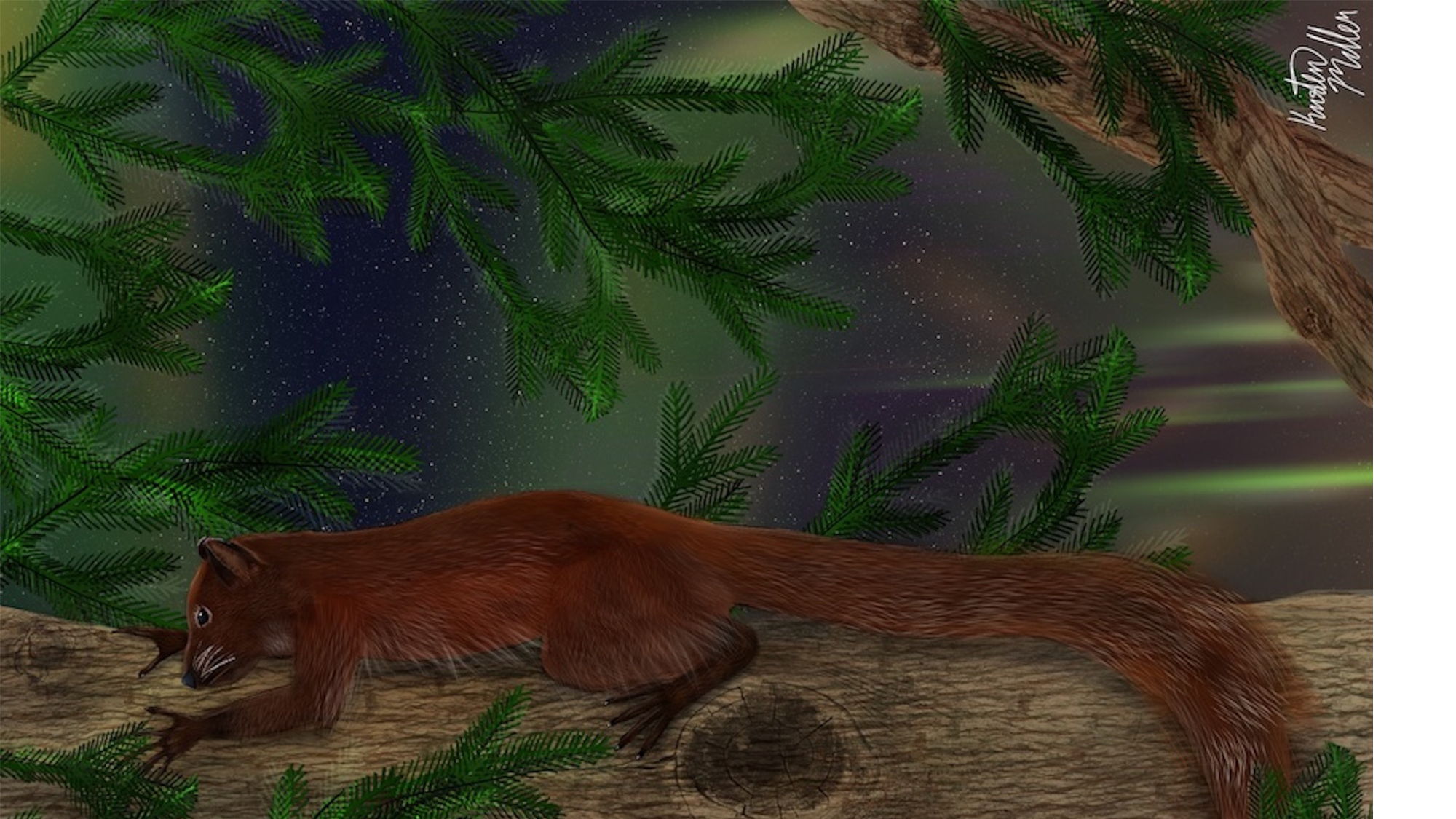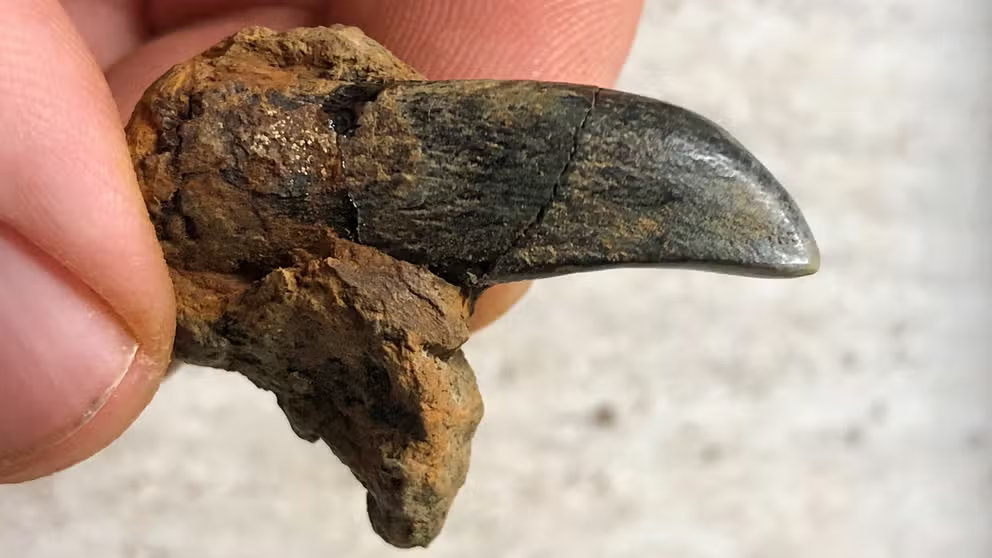Paleontologists have described two new species of the early primatomorphan genus Ignacius from Ellesmere Island, Nunavut, Canada.

Life reconstruction of Ignacius dawsonae. Image credit: Kristen Miller, Biodiversity Institute, University of Kansas.
The two new species, named Ignacius dawsonae and Ignacius mckennai, lived on Ellesmere Island approximately 52 million years ago.
These primatomorphan primates are sister species, indicating a single colonization of the island.
“Ignacius mckennai and Ignacius dawsonae descended from a common northbound ancestor who possessed a spirit to boldly go where no primate has gone before,” said Kristen Miller, doctoral student with the Biodiversity Institute and Natural History Museum at the University of Kansas.

The fossilized remains of the ancient primates were found in the Margaret Formation on Ellesmere Island, in layers of sediment linked with the Early Eocene, an epoch of warmer temperatures that could foretell how ecosystems will fare in coming years due to human-driven climate change.
“No primate relative has ever been found at such extreme latitudes,” Miller said.
“They’re more usually found around the equator in tropical regions.”
“I was able to do a phylogenetic analysis, which helped me understand how the fossils from Ellesmere Island are related to species found in midlatitudes of North America — places like New Mexico, Colorado, Wyoming and Montana.”

“Even down in Texas we have some fossils that belong to this family as well.”
The Arctic Circle was much warmer when these close evolutionary cousins of primates lived, but like today was still mostly dark for half of the year.
This darkness may have triggered both species to evolve more robust teeth and jaws compared with other primate relatives of the time.
“A lot of what we do in paleontology is look at teeth — they preserve the best,” Miller said.
“Their teeth are just super weird compared to their closest relatives.”
“So, what I’ve been doing the past couple of years is trying to understand what they were eating, and if they were eating different materials than their middle-latitude counterparts.”
Miller and colleagues believe food was much tougher to find during dim winter months when the Artic primate relatives likely were forced to consume harder material.

“That, we think, is probably the biggest physical challenge of the ancient environment for these animals,” said University of Kansas Professor Chris Beard.
“How do you make it through six months of winter darkness, even if it’s reasonably warm? The teeth and even the jaw muscles of these animals changed compared to their close relatives from midlatitudes.”
“To survive those long Arctic winters, when preferred foods like fruits were not available, they had to rely on ‘fallback foods’ like nuts and seeds.”
Ignacius mckennai and Ignacius dawsonae were slightly larger than their closest relatives farther to the south — a group of primate cousins known as plesiadapiforms.

“But they’re still pretty small,” Miller said.
“Some plesiadapiforms from the midlatitudes of North America are really, really tiny.”
“Of course, none of these species are related to squirrels, but I think that’s the closest critter that we have that helps us visualize what they might have been like.”
“They were most likely very arboreal — so, living in the trees most of the time.”
Source: sci.news








